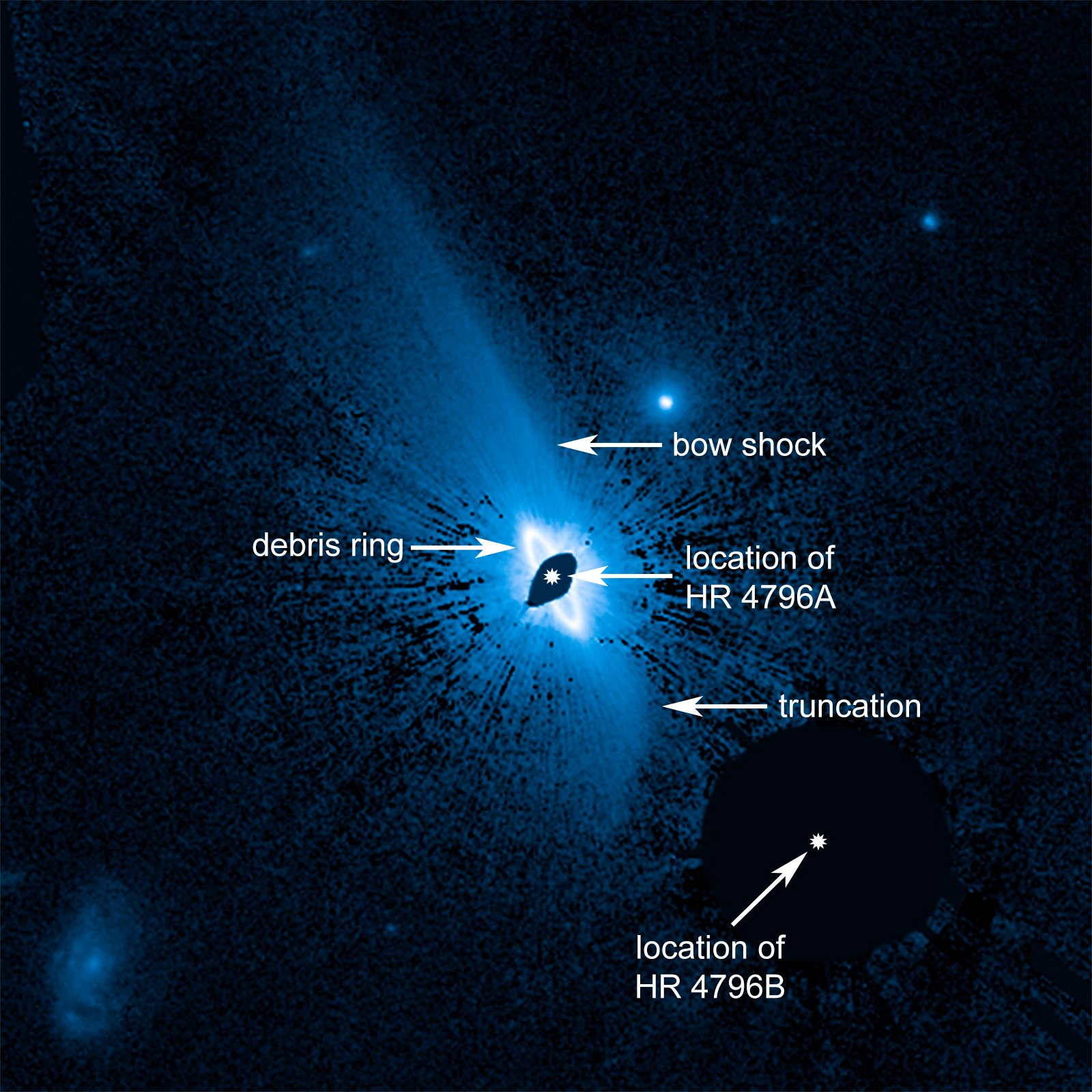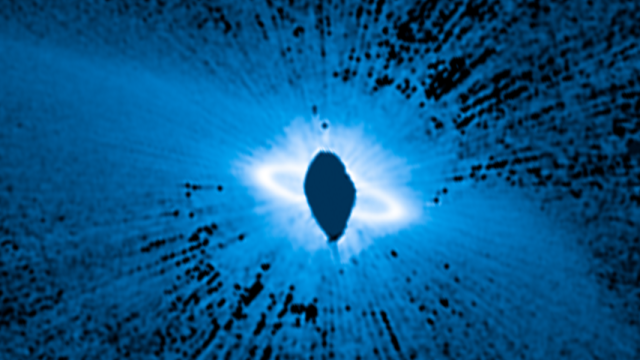You’re looking at an image of an enormous ring of debris, 237 light years away from Earth, orbiting a long-studied, young star called HR 4796A. While the bright white ring of debris may be the most visually striking part of the image, astronomers are more excited about what’s around it: The much larger, less-concentrated area of dust.
The star and its ring of debris. Image: NASA, ESA, and G. Schneider (University of Arizona) (HubbleSite.org)
Scientists have long known about the dust and ring surrounding the star. The ring alone is 77 astronomical units in radius, almost twice Pluto’s average distance from our our Sun. But a team recently took another look with the Hubble Space Telescope, and learned that the structure was in fact much larger and more complex than they previously thought.
“The resulting images unambiguously reveal the debris ring embedded within a much larger, morphologically complex, and biaxially asymmetric exo-ring scattering structure,” the authors wrote in the paper published recently in The Astronomical Journal. In other words, it’s big and weird-shaped. Check it out:

The star, its debris ring, and the much larger disk of dust. Image: NASA, ESA and G. Schneider (University of Arizona) (HubbleSite.org)
You’re looking at visible light scattering off of debris over more than 160 billion km of space, imaged with Hubble’s Space Telescope Imaging Spectrograph (STIS) tool. The system appears to have a shockwave on the top left, and is truncated on the bottom right side, giving it a sort of boomerang shape.
Researchers aren’t quite sure how the system got its shape, but perhaps the nearby companion star, HR 4796B, is influencing the shape with its gravitational pull. It isn’t easy understanding these things, given all the possible influencing factors, according to a Hubble press release.
Hubble has observed few systems like HR 4796A, but the scientists predict that these debris ring might be relatively common in younger stars, according to the paper. HR 4796 is a mere eight million years old – our Sun is around 4.5 billion years. And understanding these structures could help understand how stars evolve, and even how planets might form around these young stars. Our own solar system probably formed from a dust disk, too, after all.
That’s space for you. Weird.
[Hubble]
